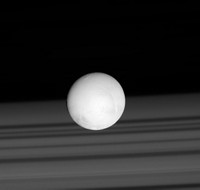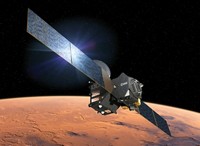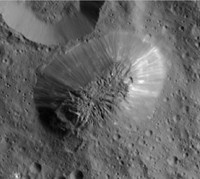Advertisement
Grab your lab coat. Let's get started
Welcome!
Welcome!
Create an account below to get 6 C&EN articles per month, receive newsletters and more - all free.
It seems this is your first time logging in online. Please enter the following information to continue.
As an ACS member you automatically get access to this site. All we need is few more details to create your reading experience.
Not you? Sign in with a different account.
Not you? Sign in with a different account.
ERROR 1
ERROR 1
ERROR 2
ERROR 2
ERROR 2
ERROR 2
ERROR 2
Password and Confirm password must match.
If you have an ACS member number, please enter it here so we can link this account to your membership. (optional)
ERROR 2
ACS values your privacy. By submitting your information, you are gaining access to C&EN and subscribing to our weekly newsletter. We use the information you provide to make your reading experience better, and we will never sell your data to third party members.
Physical Chemistry
Rosetta mission detects biological building blocks on comet 67P/Churyumov-Gerasimenko
Discovery of glycine and phosphorus advances theory that comets could have played a role in seeding life on Earth
by Sarah Everts
May 30, 2016
| A version of this story appeared in
Volume 94, Issue 22
Data from the European Space Agency’s Rosetta mission reveal that the comet 67P/Churyumov-Gerasimenko is home to glycine and phosphorus, two biological building blocks important for the origin of life. The work follows the prior discovery of organic molecules on 67P, including methyl isocyanate, acetone, propanal, and acetamide. In total, the findings support the theory that comet impacts may have played a crucial role in seeding life on our planet, notes the University of Bern’s Kathrin Altwegg, who led the research team (Sci. Adv. 2016, DOI: 10.1126/sciadv.1600285). Glycine was detected on several occasions by a mass spectrometer called ROSINA on the Rosetta probe as it orbited and approached the comet for landing in 2014. The team believes the measured glycine was released from dust grains in 67P’s coma, the hazy envelope that surrounds a comet. Although glycine was previously found in a sample taken from the Wild 2 comet, that sample had some contamination issues, leaving glycine’s cometary origin to be inferred by carbon isotope ratios. With 67P, Rosetta measured the amino acid’s presence at the comet directly, avoiding possible contamination issues back on Earth.





Join the conversation
Contact the reporter
Submit a Letter to the Editor for publication
Engage with us on Twitter